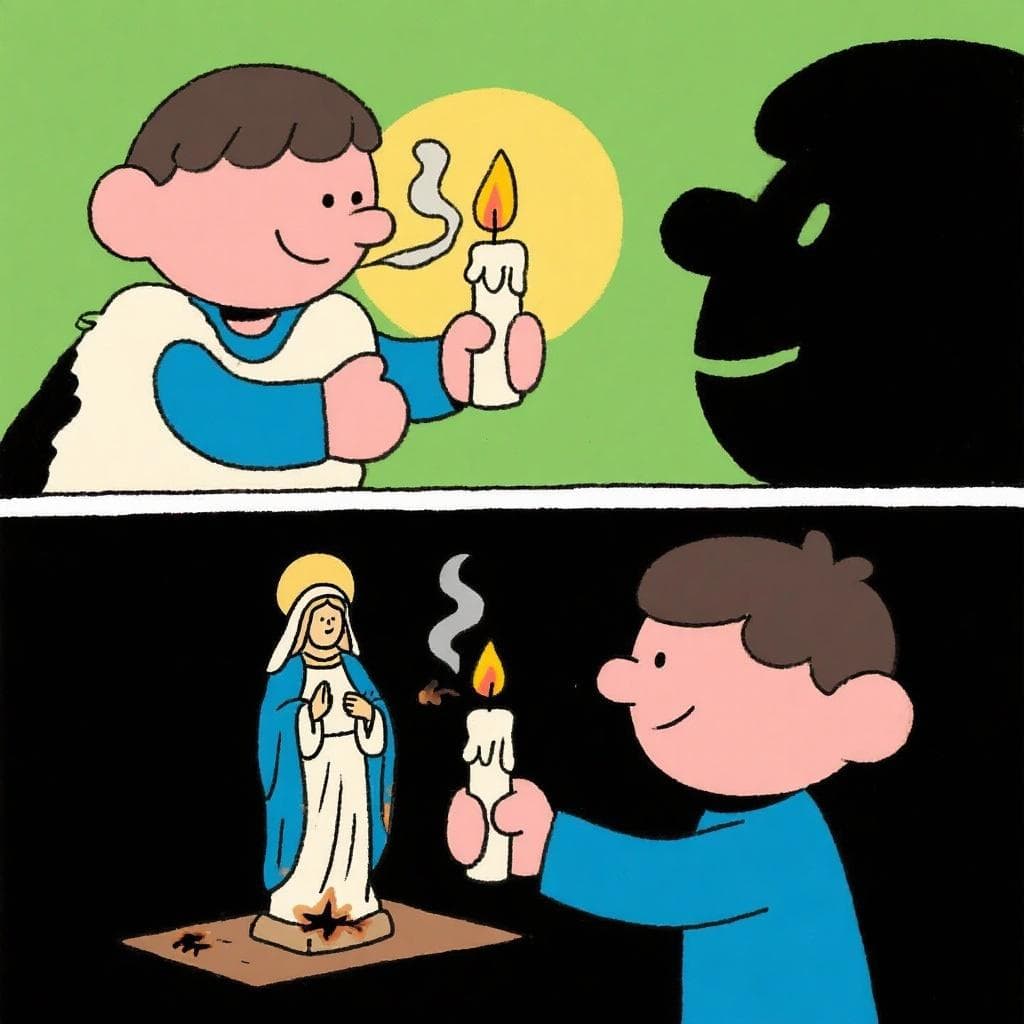Ni tanto que queme al santo, ni tanto que no lo alumbre
/nee TAN-toh keh KEH-meh al SAN-toh, nee TAN-toh keh noh loh ah-LOOM-breh/
A call for moderation and balance; to avoid extremes in any situation.
💡 Understanding the Idiom
🎨 Literal vs. Figurative

Literally: 'Not so much that it burns the saint, nor so little that it doesn't light him up.'

In practice, it means finding a healthy balance and avoiding extremes in any activity.
Key Words in This Idiom:
📝 In Action
Hacer dieta está bien, pero no dejes de comer. Recuerda, ni tanto que queme al santo, ni tanto que no lo alumbre.
B2Dieting is fine, but don't stop eating altogether. Remember, everything in moderation.
Debes ser estricto con tus hijos, pero también cariñoso. Ya sabes, ni tanto que queme al santo...
C1You should be strict with your kids, but also affectionate. You know, find a happy medium...
📜 Origin Story
This proverb comes from the old Catholic tradition of lighting candles for saints. Worshippers had to place their candles carefully. If a candle was too close to the wooden or painted statue of the saint, the flame and smoke could damage it ('que queme al santo'). But if it was too far away, its light wouldn't illuminate the saint's face, defeating the purpose of the offering ('que no lo alumbre'). The phrase became a perfect metaphor for finding the right balance in any aspect of life.
⭐ Usage Tips
Giving Gentle Advice
This is a classic piece of folk wisdom, often used to give friendly advice to someone who is going to extremes—whether it's working too much, being too lenient, or exercising too intensely. It's a kind way to say 'find the middle ground'.
A Complete Proverb
Unlike some idioms that can be shortened, this one is almost always said in its full, rhythmic form. Its memorable structure is part of what makes it a classic 'refrán' (proverb).
❌ Common Pitfalls
Don't Overthink the Religion
Mistake: "Thinking you can only use this in a religious context or when talking about saints."
Correction: Although its origin is religious, the phrase is 100% secular today. Use it for any situation that requires balance: work-life, diet, parenting, spending money, etc.
📚 Related Grammar
Want to understand the grammar behind this idiom? Explore these lessons for a deep dive:
The Present Subjunctive Formation
The verbs 'queme' (from quemar) and 'alumbre' (from alumbrar) are in the subjunctive mood because the phrase talks about hypothetical limits and conditions, not facts.
Direct Object Pronouns (lo, la, los, las)
Notice the use of the direct object pronoun 'lo' in 'que no lo alumbre'; this little word stands in for 'el santo' (the saint) to avoid repeating the noun.
🌎 Where It's Used
Spain
Very common and widely understood. It's considered a traditional proverb ('refrán').
Latin America
Widely known and used across the continent, especially in countries with strong Catholic roots like Mexico, Colombia, and Peru. It's part of the shared cultural library of Spanish proverbs.
🔗 Related Idioms
✏️ Quick Practice
💡 Quick Quiz: Ni tanto que queme al santo, ni tanto que no lo alumbre
Question 1 of 1
If your friend is either working 16 hours a day or not working at all, what advice could you give them?
🏷️ Tags
Frequently Asked Questions
Is this phrase formal or informal?
It's considered neutral. You could use it in a friendly conversation or even in a more formal context when discussing the need for balance, for example, in business or policy. It carries the weight of traditional wisdom.
